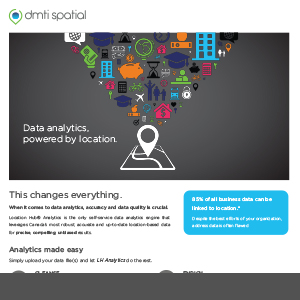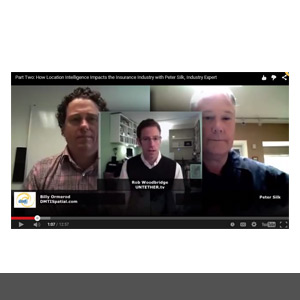Top 3 Ways Location Intelligence Empowers Underwriters
Today, modern location intelligence solutions are transforming the underwriting process. They give front line underwriters the ability to quickly and intuitively understand the exposures associated with one address – or an entire portfolio. Geospatial analysis has evolved from a back-office, ‘after the-fact’ function to a leading role in real-time underwriting decisions. Below are the top 3 ways Location Intelligence empowers Underwriting.
1) Individual Risk Assessment and Pricing
True location intelligence solutions allows underwriters to more accurately assess risk at the individual property level, resulting in higher quality underwriting, more profitable business and cost savings through reduced claims.
Proper risk assessment starts at the point of sale. In the case of personal and commercial properties, that involves the validation and cleansing of addresses. Location intelligence solutions allow insurers to quickly validate the accuracy of new addresses or addresses currently on file for existing policyholders.
2) Risk Accumulation and Portfolio Management
Accumulation or concentration of risk is an ongoing concern for insurance companies. An accumulation of risk occurs when a portfolio of business contains a concentration of risks that might give rise to exceptionally large losses from a single event. Such an accumulation might occur by location (property insurance) or occupation (employers’ liability insurance), for example.
Insurance underwriters require real-time visibility into their policy accumulations, perils risk data and claims history across their book of business. With an aggregated view of risk (perils and accumulations), underwriters can better manage their overall exposure across their entire portfolio.
Location intelligence solutions offer an accumulation and perils management tool to analyze various risk levels against individual addresses, street levels and postal codes to produce hazard ratings. This means underwriters can make decisions using up to-date data, such as flood or earthquake risk, contaminated land or proximity to potential risk sites, such as gas or propane storage facilities
3) Segmentation
A powerful result of location intelligence technology for underwriters is segmentation. Instead of looking at risks on a “blanket” basis, they have new tools to slice individual exposures by specific rooftop locations. In the example of a flood-prone region, insurers can identify which specific properties are at risk, instead of relying on broad postal code or FSA boundaries.
By assessing risk at the property level, insurers have the ability to underwrite business they may have previously declined, based on an inaccurate assessment of the risk location. With a better understanding of geographical risk (peril and accumulations) insurers can be more aggressive with rates in low-risk areas. Underwriters can identify under-exposed areas and target those areas with marketing efforts and competitive premium. Using a location intelligence capability, the insurer can hone in on a given region’s hot and cold spots
Conclusion
Location-based technology has become an invaluable strategic tool to many leading insurers. Precise mapping and geocoding allow underwriters to quickly access information, recognize patterns and drill down into data for detailed analysis and sound decision-making. The real danger for those carriers not adopting location intelligence is adverse selection – the writing of poor risks without accurate or detailed information.
Understanding where a property is in relation to risk elements is a key decision affecting an insurance carrier’s profitability. Using location intelligence is a simple solution to a complex, real-world problem for the insurance industry. Insurers depend on geographic and demographic information to assess underwriting risk, develop appropriate pricing models, match coverage, expand markets, serve existing customers and develop new or niche business
To learn more download our Property & Casualty Insurance: Getting Risk Right White Paper








